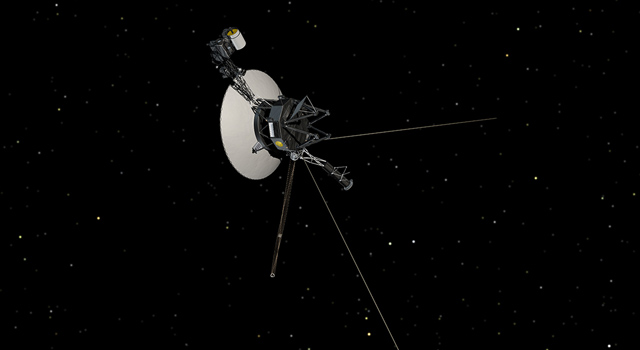News | February 1, 1982
Four New Satellites of Saturn Found

Dr. Stephen P. Synnott of the Jet Propulsion Laboratory has found evidence for the existence of four, and possibly as many as six, new satellites of Saturn, using data from the Voyager 2 Saturn encounter.
The discoveries bring the number of known Saturnian satellites to between 21 and 23. The two "possible" satellites were seen in only one observation each, so their orbits are not yet confirmed.
The innermost satellite found by Synnott moves at about the same orbital distance from Saturn as the alreadyknown satellite, Mimas. The object was originally suggested by data from charged-particle instruments aboard Voyager 2. Synnott and JPL planetary scientist Richard Terrile found the satellite.
A third (and possibly fourth) companion of the satellite Tethys appear to move in what Synnott calls "horseshoe" orbit. Synnott says that he is sure an object is there. But he is not certain yet, because of resolution limits in the photos, whether it is one or two objects. Satellites in "horseshoe" orbits trade orbits as they approach each other.
Another satellite was found by Synnott at point about 60 degrees ahead of the satellite Dione. That is the second found in that region. The first was discovered in Earth-based observations in 1980.
Synnott found yet another satellite about 350,000 kilometers (217,000 miles) from Saturn, between the orbits of Tethys and Dione. It circles Saturn once in 2.44 days.
Synnott's final observation, faint streak in Voyager 2 photo, indicates satellite (the "possible sixth") may exist about 470,000 kilometers (292,000 miles) from Saturn, between the orbits of Dione and Rhea. Its period would be, Synnott calculates, 3.8 days.
The object that shares the orbit of Mimas is about 10 kilometers (6 miles) in diameter. All the others are about 15 to 20 kilometers (nine to 12 miles) in diameter.
Synnott, member of the Voyager navigation team, also found two new satellites at Jupiter in photos he studied after the Voyager encounters in 1979.
Two Voyager spacecraft were launched in 1977 to perform flyby encounters with Jupiter, in 1979, and Saturn in 1980 and 1981. The Voyager project is managed for NASA by the Jet Propulsion Laboratory.
